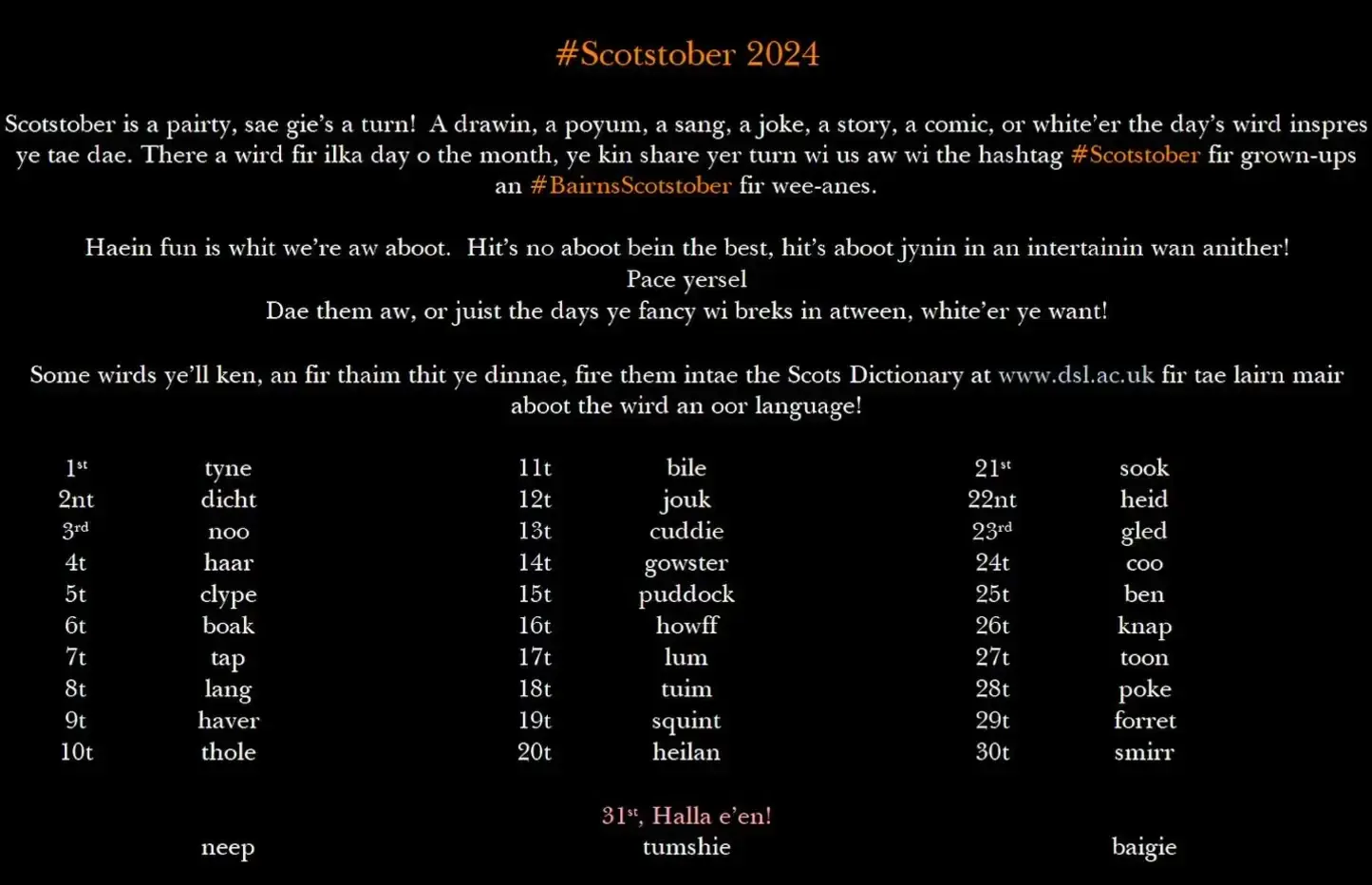
- theferret.scot Radioactive pollution from bomb plant sparks cancer fears
Radioactive air pollution from the nuclear weapons plant at Coulport, on the Clyde, has more than doubled over the last six years.

Radioactive air pollution from the nuclear weapons plant at Coulport, on the Clyde, has more than doubled over the last six years, prompting cancer warnings from campaigners.
Emissions of the radioactive gas, tritium, from the Royal Naval Armaments Depot on Loch Long, have risen steadily between 2018 and 2023 from 1.7 billion to 4.2 billion units of radioactivity, according to the latest official figures.
Campaigners say that tritium is “very hazardous” when it is breathed in, and can increase the risk of cancers. But according to the Scottish Environment Protection Agency (Sepa), the emissions are well within safety limits.
The Ministry of Defence (MoD) has declined to say what has caused the increased pollution. Tritium is known to leak from ageing nuclear submarine reactors, and is also an essential component of nuclear bombs.
- talkingupscotlandtwo.com Herald writer’s cringing ignorance of the best equipped ferry service in the world – ours
MV Glen Sannox undergoing sea trials (Image: newsquest) By Professor John Robertson, Rough Guide Best International Ferry Correspondent 2022, 2023 and 2024 In the Herald yesterday: MUCH has been sa…

OP: @[email protected]
Scotland’s ferry service must be the worst in the world. We know this because the media keep saying so. But wait! How does it compare with others around the world? Turns out it’s not so bad after all. Funny that. It’s almost as if our media has some sort of agenda. Herald writer’s cringing ignorance of the best equipped ferry service in the world – ours
- www.medievalists.net Medieval Insults - Medievalists.net
If you are looking for ways to hurl insults at your enemies, then the medieval world has some interesting examples for you.
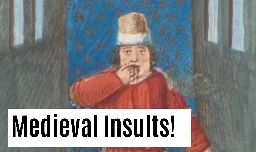
If you are looking for ways to hurl insults at your enemies, then the medieval world has some interesting examples for you. Taken from chronicles, literature and court cases, they show inventive ways to offer slights and invectives.
The words here are sometimes poetic and clever and sometimes just vulgar and mean, so reader discretion is advised.
Flyting
A practice found in the British Isles and Nordic lands during the Middle Ages was flyting – a game where two people would exchange insults against each other in front of an audience. It has been coined the medieval version of a rap battle. A famous example is The Flyting of Dunbar and Kennedie, recorded in Scotland around the year 1500. Here are the opening lines of what Kennedie said about Dunbar:
Dirty Dunbar, on whom do you blow your boast?
Pretending to write such slanderous screeds,
Raw-mouthed rebel, you fall down at the joust.
My laureate letters I loose at your deeds;
Mandrake, manikin, master only of mead,
Thrice-shelled trickster with a threadbare gown,
Say Deo mercy, or I’ll cry you down;
Leave your rhyming, rebel, with your wit’s weeds.
-
Sueno's Stone
www.undiscoveredscotland.co.uk Sueno's Stone Feature Page on Undiscovered ScotlandInformation about and images of Sueno's Stone Pictish stone in Forres on Undiscovered Scotland.
Sueno's Stone is the largest and most spectacular of the many carved stones that have survived from the early medieval period in Scotland. It stands in a purpose built glass shelter on the north-eastern edge of the town of Forres beside a disused spur of road near the roundabout between the B9011 and the A96.
The most striking thing about Sueno's Stone is its enormous scale. It stands over 6.5m or 21ft high and carries intricate carvings that completely cover the front and rear faces of the stone, and its sides. The western or front side of the stone carries a huge ring headed cross, the body and surrounds of which have been filled with interlaced knotwork designs. The base of the cross is a few feet above the base of the stone, and the gap beneath it carries carvings of two bearded figures facing one another, with a smaller figure between them and others behind them.
The rear or eastern side of the stone is very different. Here you are confronted with what amounts to a Bayeux Tapestry in stone: an account of a battle told in a series of horizontal strips set within panels which are displayed one above another down the length of the stone. Similar techniques have been used elsewhere, especially on the Pictish symbol stone at Aberlemno Kirk, but it is the sheer scale of the battle being depicted, and the scale of the stone that has resulted, that makes Sueno's Stone unique
- www.historicenvironment.scot New exhibition exploring how folklore has shaped Scotland | HistEnvScot
A new exhibition looking at how folklore is an intrinsic part of life in Scotland opens tomorrow (Friday 1 November 2024) at Blackness Castle.
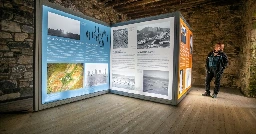
OP: @[email protected]
A new exhibition looking at how folklore is an intrinsic part of life in Scotland opens tomorrow (Friday 1 November 2024) at Blackness Castle.
A new exhibition looking at how folklore is an intrinsic part of life in Scotland opens tomorrow (Friday 1 November 2024) at Blackness Castle. Drawing on images from the Historic Environment Scotland (HES) archives, ‘In the Land, of the People’ explores how folklore is woven throughout Scotland, through its landscape, its history and its people. Visitors will be taken through the landscape, the monuments, and the communities of Scotland, exploring how folklore is an ever-evolving force that has shaped and continues to shape the world we live in. Note that due to the construction of the building the exhibition is only accessible via a staircase.
- commonweal.scot 10 Years of Common Weal
Ten years ago today (well, yesterday, but we held off because of the funeral of Alex Salmond), a group of us sat in a meeting room in Glasgow and formally created Common Weal. Since it’s our …

OP: @[email protected]
It's Common Weal's 10th birthday this week.
I still shake my head in wonder at what we've acheived in that time. Not least the 112 policy papers we've published!
Not many other think tanks - even the ones ten times our size - can say that. And we've done it without big donors, corporate sponsors or shady backroom envelopes!
See our wee celebration article here and, if you can, consider donating a few quid to keep us going for another 112 policy papers.
- randomscottishhistory.com Hallowe’en, pp.139-150. - Random Scottish History
[Brahan Seer Contents] Hallowe’en. - The only other season noted for superstitious observances is that of Hallowe’en. Hallowe’en in Gaelic means “Samhuinn,” that is “Samhtheine,” the fire of peace. It is a Druidical festival, at which the fire of peace was regularly kindled. There is no night in the...

OP : @[email protected]
Hallowe’en
The Fairies were not contented with abstracting handsome children – beautiful maidens and wives sometimes disappeared.
“The Miller of Menstrie,” in Clackmannan, who possessed a charming spouse, had given offence to the fairy court, and was, in consequence, deprived of his fair helpmate. His distress was aggravated by hearing his wife singing in the air –
Oh! Alva woods are bonnie,
Tillicoultry hills are fair;
But when I think o’ the bonnie braes o’ Menstrie,
It mak’s my heart aye sair.
After many attempts to procure her restoration, the miller chanced one day, in riddling some stuff at the mill-door, to use a posture of enchantment, when the spell was dissolved, and the matron fell into his arms. The wife of the Blacksmith of Tullibody was carried up the chimney, the fairies, as they bore her off, singing –
Deidle linkum doddie;
We’ve gotten drucken Davie’s wife,
The smith o’ Tullibody.
“Those snatched to Fairyland,” says Dr Buchan, “might be recovered within a year and a day, but the spell for the recovery was only potent when the fairies made, on Hallowe’en, their annual procession.”
-
The University of Glasgow


OP :[email protected] -
The University of Glasgow looking terrifying in this spooky, moonlit postcard view of around 1904 🎃
#Glasgow
- www.theguardian.com Scotland’s ancient Skipinnish Oak wins UK tree of the year
Lochaber tree, named after the ceilidh band that discovered it, now in running for European Tree of the Year contest
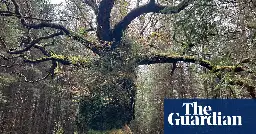
Lochaber tree, named after the ceilidh band that discovered it, now in running for European Tree of the Year contest
An ancient oak named after a ceilidh band has won the UK’s tree of the year competition and will now compete in the European edition.
The Skipinnish Oak in Lochaber, Scotland, was discovered by chance by members of the band of that name who were playing a nearby gig for the Native Woodland Discussion Group.
It is in the middle of a sitka spruce timber plantation and expert delegates from the discussion group registered it in the ancient tree inventory.
The Skipinnish oak is one of the largest trees of its kind in the region, which has been populated by nonnative timber forests. It is a fragment of the ancient ecosystem, and provides a home to diverse lichens including the rare black-eyed Susan.
-
Carbon capture and storage project will generate FIVE times more emissions than admitted
A fossil fuel and an energy company have vastly underplayed the emissions that a proposed carbon capture and storage (CCS) project at a gas power station in Scotland will spew out. New research has exposed that the Peterhead Power Station CCS project could in fact produce five times more than developers have admitted. This means it will generate up to a staggering 31 million tonnes of carbon emissions across its lifetime.
It will throw a spanner in the works for the UK government’s flagship plan to drive down greenhouse gas emissions. This is because it brings into sharp relief how CCS is a sham climate crisis solution and smokescreen for maintaining the polluting fossil fuel industry. In other words, it exposes that Labour’s love-in with the technology is little more than a ploy to keep the powerful sector on side, while doing little to address the climate crisis.
- www.paranormaldatabase.com The Paranormal Database
A collection of folklore and paranormal places across Scotland
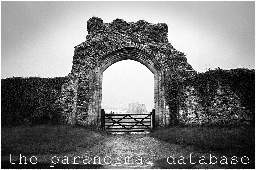
Examining folkloric, paranormal & cryptozoological locations in the UK and beyond
Scotland :
- rehis.com Annual report on private water supplies published - REHIS
The 2023 Annual Reports for Private Water Supplies has been published by Scotland’s Drinking Water Quality Regulator. In 2023, the data provided to the DWQR by local authorities showed that there are 23,034 private supplies in Scotland, with an increase of 205 from 22,829 supplies reported during 20...
Compliance with the requirement to sample all Regulated supplies annually has decreased across Scotland from 66% in 2022 to 65% in 2023. A notable drop in performance was observed in the Argyll and Bute Council area, where compliance dropped from 96% to 59% (although their Regulated supplies have increased from 522 to 764). Compliance from Perth and Kinross Council also fell from 72% in 2022 to 55%. Highland and Dumfries and Galloway Councils have both slightly increased their compliance, and Scottish Borders and Aberdeenshire Councils have been consistent with good compliance.
- bodiesandacademia.wordpress.com The afterlives of anatomical bodies: what museum collections can teach us about our past
‘Up the close and doon the stair,/ Ben the hoose wi’ Burke and Hare/ Burke’s the butcher, Hare’s the thief,/ Knox the boy who buys the beef.’ This Scottish children’s rhyme has br…
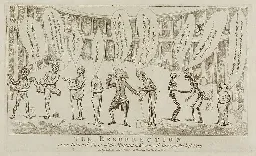
OP: @[email protected]
Up the close an doon the stair Ben the hoose wi Burke an Hare Burke’s the butcher, Hare’s the thief Knox the boy who buys the beef
—cheery wee 19th-century Edinburgh children’s skipping rhyme
- theconversation.com Mary Queen of Scots and the clandestine tricks of the women who kept her secrets
Mary’s letters were slipped under the sleeves of ladies’ gowns, sewn into doublets, or even packed into the heel of a shoe.
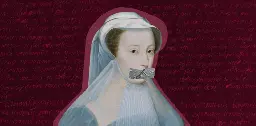
Mary, Queen of Scots spent almost 20 years in captivity. She was held in various locations across Britain from 1568 until her execution on February 8 1587.
Mary was aware that her letters were routinely read by her jailers and passed on to be scrutinised by Elizabeth I’s closest advisers, notably William Cecil. At times, she was forced to rely on clandestine techniques, including writing in invisible ink. She wrote that “although such artifices be very hazardous and vulgar, they will serve me in extreme necessity”.
Mary also used complex ciphers to disguise the contents of her correspondence, especially when she wished to discuss plots designed to set her free. Hundreds of her coded letters survive in different forms (as copies, translations, and originals), many of them from supporters who were directly involved in schemes including the Babington plot of 1586, which aimed to assassinate Elizabeth I and replace her with Mary.
- www.thecollector.com What Ancient Rituals Do We Still Celebrate at Halloween?
Halloween is now celebrated globally, but its origins and customs come from a wide range of cultural influences.

Halloween is now celebrated globally, but its origins and customs come from a wide range of cultural influences.
Trick or Treat
There are conflicting theories on the origin of this popular tradition. The truth is likely to be a combination of all of these. Firstly, during Samhain, food would be left out as offerings to wandering souls who walked the earth at night. In time, merrymakers began to dress as these spirits in exchange for small food offerings. The German-American tradition of belsnickeling also saw people dressing in ghoulish costumes and going door-to-door. In this tradition, those who answered would have to guess who was disguised and then give a small offering if they were wrong.
This is reminiscent of the Scottish practice of ‘guising’ (or ‘souling’). Mostly children (although poorer adults were recorded to have taken part also) would go door-to-door, in costume, offering prayers for the dead on All Souls’ Day. Over time, the prayers evolved into jokes, tricks, songs and other entertainment in return for money or food. The practice of trick-or-treating remains popular today, particularly in the United States.
- www.dailyrecord.co.uk Scotland's 'most haunted' city named - and it isn't Edinburgh or Glasgow
New research has revealed the "most haunted" cities in Scotland based on factors such as reports of paranormal activity - and first place is neither Edinburgh or Glasgow.
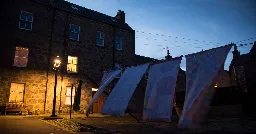
New research has revealed the "most haunted" cities in Scotland based on factors such as reports of paranormal activity - and first place is neither Edinburgh or Glasgow.
According to the experts, Aberdeen is the most haunted city in both Scotland and the UK. The port city was found to have 233 memorials and 41.1 vacant properties per 10,000 people.
Alan Boswell Group found that the Granite City has had 20 reports or paranormal activity, or 0.11 per 10,000 people. The experts also state that Aberdeen has 118 homes that were built before 1918 for every 10,000 residents.
In terms of particular spooky buildings in Aberdeen, the 19th-century Norwood Hall Hotel has earned a reputation amongst locals and visitors alike for strange goings-on. According to legend, the ghosts of former owner James Ogston, his wife, and his mistress roam the hotel — in particular its dining room and main staircase.
-
THE UK THE BIGGEST CON TRICK IN HISTORY
YouTube Video
Click to view this content.
OP: @[email protected]
The Scotland Channel
-
Independence Campaign Review (Believe in Scotland 2024)
Believe in Scotland in a nutshell - We campaign for Scottish independence.
We are a collaborative movement of 142 local and national independence campaign groups. A fully democratic campaign with 33 elected members to our National Campaign Steering Group truly representative of the grassroots Scottish independence movement.
What makes us different is that we are 100% non-party political and focussed on reaching outside of the social media Yes bubble, reaching the undecided with positive messages on independence.
Our Goal is to make Scotland become an independent nation. We believe that independence is the only way to make Scotland a fairer, greener, wealthier, healthier, happier and more successful country.
Our Mission is to help the grassroots movement professionalise, to educate and engage, raise funds, and access materials that will help them reach both undecided and open minded No voters.
Here are just a few of the highlights of Believe in Scotland’s independence campaigning and educational activities in the last twelve months.
- www.medievalists.net In Search of the Once and Future King: Arthur and Edward I
King Edward I of England found not only a role model but a political tool every bit as puissant as the legendary king himself.
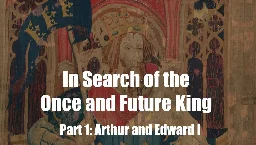
In Arthur and the distinctive genre of literature that had grown up around the celebration and adaption of his mythical exploits, King Edward I of England found not only a role model but a political tool every bit as puissant as the legendary king himself. Through the conscious emulation and glorification of the Arthurian ideal, King Edward would come within a hair’s breadth of matching Arthur’s legacy, the unification and domination of the British Isles. In chasing the specter of a manifest destiny swathed in the trappings of Arthurian iconography, Edward formalized and enshrined the hegemonic and imperial inclinations of his predecessors, fundamentally altering the way in which England related to its neighbours.
- theferret.scot Secrecy over radioactive pollution from nuclear bases
The Ministry of Defence has blocked the Scottish Government’s environmental watchdog from releasing information about radioactive pollution from nuclear bases.
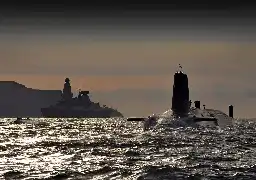
The Ministry of Defence has blocked the Scottish Government’s environmental watchdog from releasing information about radioactive pollution from the Clyde nuclear bomb bases for the last nine years.
Emails released under freedom of information (FoI) law reveal that the Ministry of Defence (MoD) asked the Scottish Environment Protection Agency (Sepa) not to publish information about “environmental issues with radioactivity” at Faslane and Coulport near Helensburgh to protect “national security”.
-
A Team Of Archaeologists Uncover Scotland’s Oldest Pictish Fort
YouTube Video
Click to view this content.
A Team Of Archaeologists Uncover Scotland’s Oldest Pictish Fort | Digging For Britain
-
DWP are breaking the law!
Edinburgh’s High Riggs and Leith jobcentres are breaking benefits law! They are flouting “Transitional protection” provisions for disabled and sick claimants on Employment and Support Allowance.
All claimants are being transferred from “legacy benefits” like Employment and Support Allowance (ESA) to Universal Credit. By law ESA claimants keep their “not fit for work” status and automatically receive disability-related payments in Universal Credit. But through our solidarity activity in accompanying claimants, ECAP has learnt that High Riggs jobcentre in Edinburgh have been illegally trying to force such claimants to obtain a “Fit Note” from their GP and then go through a “work capability assessment”. (The Work Capability Assessment decides whether a claimant is to be judged fit to seek employment or not.)
Claimants report Leith and High Riggs jobcentres are both doing this – and it is very likely that jobcentres Britain-wide are denying ESA claimants’ rights in this way. This potentially affects over a million claimants on ESA.
-
Celebrating Robert Fergusson
www.gla.ac.uk Stories from Glasgow: Episode Four – Celebrating Robert FergussonDiscover the Edinburgh poet who inspired Robert Burns, and whose impact extends well beyond the pages of his works to the city’s landscape, and even the treatment of brain injuries.
OP: @[email protected]
Robert Burns called Robert Fergusson (1750–1774) “my elder brother in the Muse”. In this podcast, Prof Rhona Brown & Dr Amy Wilcockson share their insights into Fergusson’s life, works & legacy – listen free online, & hear extracts of his work read by Billy Kay & James Robertson
- theorkneynews.scot A FLOOD ALERT has been issued for Orkney.
This alert is for coastal flooding. Due to high water levels and some waves there is a risk of flooding from the sea to low lying areas from Thursday evening onwards. The situation is likely to wor…
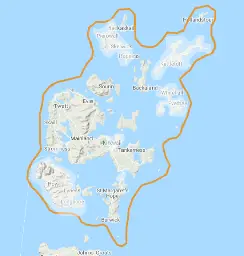
This alert is for coastal flooding. Due to high water levels and some waves there is a risk of flooding from the sea to low lying areas from Thursday evening onwards. The situation is likely to worsen at the week end. Remain vigilant and remember, it is your responsibility to take actions which help protect yourself and your property. Advice and information is available…
-
Huge opportunity for Grangemouth - an independent Scotland could grasp it. - Business for Scotland
Scotland is on the brink of discovering if a just transition away from fossil fuels will be a reality or just a slogan. There is a plan for Grangemouth, Scotland’s only oil refinery, to become a world-leading hub for sustainable aviation fuels.
But the biofuels market doesn't yet exist at scale. It requires the UK government to shape it, providing a price floor for Sustainable Aviation Fuel, so as to reduce investor risk.
If Scotland were an independent country it would be able to focus on this as a national priority. As it is, the Scottish government has no power over energy regulation. It has to sit on its hands and wait for Westminster, which has so often shown itself indifferent to Scotland’s needs, to act
- talkingupscotlandtwo.com CalMac ferry fares to increase to only a fraction of those for Isle of Wight.
From BBC Scotland today: Ferry fares in Scotland will increase by 10% from next year, the Scottish government has confirmed. The rise will take effect from 1 January 2025 on the Northern Isles netw…

OP: @[email protected]
Scotland’s ferries are a national disgrace, right? We know because the #Media, especially the #BBC, constantly tell us so. But wait a moment. Take a look at some comparisons on pricing, age of fleet, reliability & public subsidies. Read this piece & you might start to think the media are being very economical with the truth.
- www.medievalists.net Maps: Europe in the Year 1000 - Medievalists.net
Our latest map of the medieval world details Europe in the year 1000.
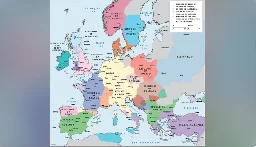
Created by Tina Ross, this map details the kingdoms and states that existed in Europe at the beginning of the 11th century. While the Holy Roman Empire was the major power in Central Europe, other powerful states include the Caliphate of Cordoba and the Bulgarian Empire. Many smaller states also existed, including the kingdoms of Strathclyde and Naverre. The map also details the important cities and towns that existed in the year 1000.
-
Temple
www.undiscoveredscotland.co.uk Temple Feature Page on Undiscovered ScotlandInformation about and images of Temple in Midlothian on Undiscovered Scotland.
Friday 13 October, 1307, is a date that echoes across history, spawning a deep-seated superstition about any Friday 13th. On that day, Philip IV, King of France, arrested hundreds of Knights Templar in France. Philip had been out to get the Templars since 1302. This had nothing to do with the global mythology that has since grown up around the Knights Templar, and it especially had nothing to do with the Holy Grail: it was simply that, as one of the richest organisations in Europe, the Templars had turned down a demand from Philip for a loan he needed to further his military adventures.
His campaign against the Templars extended to kidnapping Pope Boniface VIII in September 1303, and possibly poisoning his successor, Benedict XI in July 1304. In 1305 Philip finally got a Pope who would see things his way, when a Frenchman who had been a childhood friend became Pope Clement V. By 13 October 1307 Philip felt his position was strong enough for him to move against the Templars in France, arresting their members and seizing their treasury and assets.
Confessions of heresy and a wide range of other invented crimes forced out of the arrested French Templars gave Philip IV the ammunition he needed to try to persuade Pope Clement V that the Order should be suppressed worldwide. Clement V finally succumbed to the pressure, and issued an Edict to dissolve the Templars after the Council of Vienna in 1312. Templar properties and assets in countries previously sympathetic to them were seized, in many cases being transferred to the Knights Hospitaller of the Order of St John of Jerusalem. At the same time, many Knights Templar who had not already gone to ground were put on trial and executed. It had taken ten years for Philip to get even with the Templars, but get even he certainly had.
In Scotland, King Robert the Bruce, himself under excommunication from the Church after his murder of the Red Comyn, was less inclined than most European monarchs to rigorously enforce all aspects of the Papal Edict dissolving the Templars. As elsewhere, their Scottish lands and properties, such as Temple itself and the church at Tullich, were transferred to the Knights of St John, but there was little persecution of individual members of the Order in Scotland, and many Knights Templar were allowed simply to become Knights of St John.
Since they had first been established in Scotland by David I in 1153, the main Scottish base of the Knights Templar had been 15 miles south of Edinburgh at a place called Balantradoch. Here they had a monastery on the east bank of the River South Esk. In 1312 ownership of the monastery was transferred to the Knights Hospitaller of the Order of St John, and became part of the property they administered from their Scottish headquarters at Torphichen Preceptory near Linlithgow.
During the 1500s Balantradoch came to be known as Temple, reflecting its earlier history.
-
Kildonan
www.undiscoveredscotland.co.uk Kildonan Feature Page on Undiscovered ScotlandInformation about and images of Kildonan on Arran on Undiscovered Scotland.
Named after the Irish monk Saint Donan, who is believed to have lived here in the sixth century, Kildonan lies at the south-eastern extremity of the Isle of Arran. Reached via a loop of minor road dropping to the shore, the village stands out for two reasons.
The first is that it is home to an excellent beach which offers stretches of sand, a relative rarity on Arran. The second is more immediately obvious as you approach it. The views south over the village to the Ayrshire coast and the islands of Pladda and Ailsa Craig are simply superb.
Kildonan also boasts a castle, standing out on the old raised beach behind and above the village. It was once, with Lochranza Castle and Brodick Castle, one of three fortresses guarding Arran's strategically important position in the approaches to the Clyde. Today's Kildonan Castle is only a shadow of its former self, but still reflects its origins as a 13th Century keep.
The castle was originally built by the Lords of the Isles, but by 1406 was in the ownership of Robert III, who in that year passed it on to his illegitimate son, John Stewart of Ardgowan. In 1544 it was acquired by the Hamilton family, the Earls of Arran.
-
The real reason 25% of Scottish children are allowed to live in poverty
How can it be that millions of Scots are struggling to pay essential bills?
It could be because economic growth as measured by GDP was never designed as a yardstick of a society’s success or otherwise. It only really measures financial flows (it’s the same in GDP terms whether you spend £10 billion to build affordable, quality social housing or on bagging yourself a gold-plated SUV with diamond-inlaid wheel trims, but one might just possibly be better than the other).
GDP growth is, however, constantly touted as a proxy for societal success – most often by those with money and power, because they seem to be profiting very nicely from the status quo, thanks very much.
In fact, growth-focused neoliberal economic policies are strongly linked to Scotland’s poor health, poverty and mortality indicators over the past 30 years, earning it the title of “the sick man of Europe”.
These indicators have worsened due to the ‘austerity agenda’ of reduced public spending, tax rises, and the privatisation of public services and/or the responsibility for care being transferred to individuals that has been UK government policy since 2010, and which continues to this day.
-
The Council of Nations and Regions Debacle
The CNR is derisory to Scotland, equating English city Mayor’s – the combined budget of which is just over £2b with Scotland’s elected FM with a budget of £60b. But it’s not really about numbers is it? It’s comparing apples and pears and deliberately equating a region with a nation which is insulting. As Dr WE Bulmer puts it:
"The ‘Council of Nations and Regions’ has one Scottish and one Welsh representative out of 18. This shows the ridiculousness of any scheme that treats the nations of Scotland and Wales on a par, not with England, but with individual English city-regions.”
But it’s worse than that. Because Labour are on the one hand undermining the devolution settlement they themselves created, while on the other hand presenting the bogus version of devolution they have created in England.
The CNR has no real powers, no legal basis and no autonomy.
-
The People Of the Ness
theorkneynews.scot The People Of the NessBy Bernie Bell Through this year’s final dig at The Ness of Brodgar, one of the Artists in Residence – Jeanne Bouza-Rose – has been doing sketches of the people as…
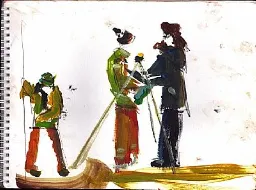
By Bernie Bell
Through this year’s final dig at The Ness of Brodgar, one of the Artists in Residence - Jeanne Bouza-Rose - has been doing sketches of the people as well as the structures. These quick impressions appealed to me as they ‘catch’ the people, and the moment. With Jeanne’s permission, I’ve copied a couple of them from her Newsletter
-
Clype

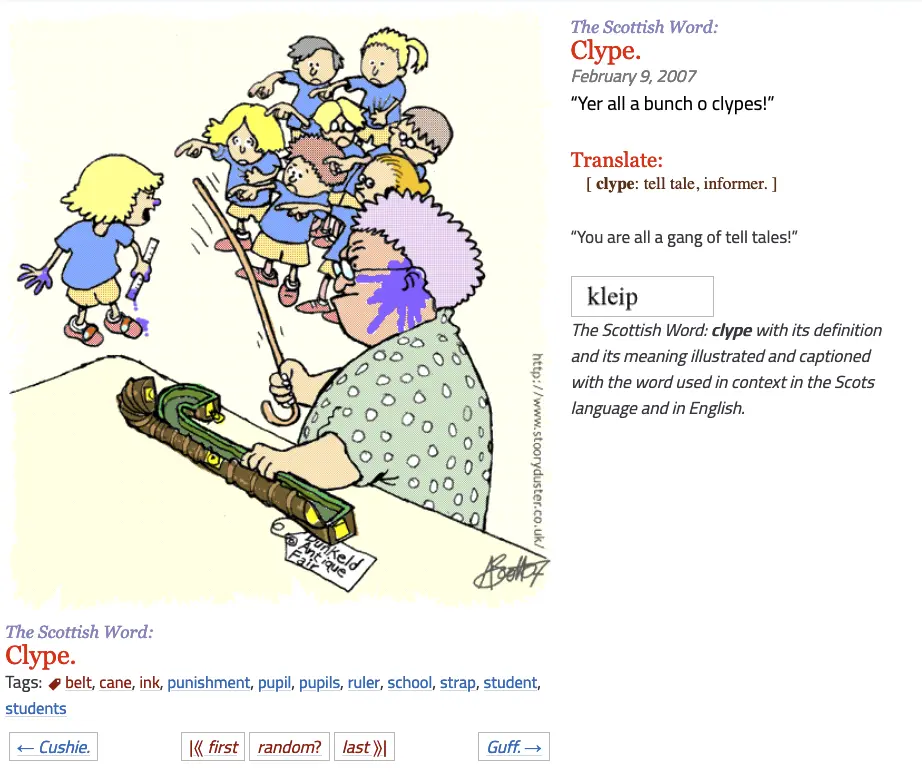
Late #Scotstober word 05 Clype. I went to a #school where the desks still had inkwells and slates were still in the store cupboard. Happy days. And you could get the belt.
-
The UK Gov's Winter Fuel Rule Highlights the Limits of Devolution
When the new Labour Chancellor Rachel Reeves announced without warning that it was axing the funding for this benefit, the Scottish government said it could not make up the difference out of its fixed budget which has already been allocated.
This highlights the limits of devolution because Scotland is very rich in renewable energy - but because it is part of the UK, Scots are made to pay an artificially high tariff for electricity. That is the real root of the problem which is forcing 39% of Scots pensioners into fuel poverty.
Unlike similar energy-rich countries like Sweden and Iceland, Scots pensioners pay the highest energy bills in Europe. But the Scottish government has no control over how energy is regulated or priced, or the way its energy infrastructure is being used.
New super highway - but Scots still have to pay an artificially high tariff
Labour has greenlit plans for a new energy superhighway to transmit power from Scotland to the south of England - but Scotland won’t benefit from that in the way it would as an independent country. Of course, if Scotland were independent like Scandinavian countries this would be a lucrative transaction that could allow Scotland to reduce the electricity tariff. That is what other energy-rich countries like Sweden, Denmark and Iceland do. The north of Sweden is experiencing a boom as businesses set up shop there to harness cheap energy.
-
A wish for Scotland - this is what the independence movement truly hopes for.
Let's end on a comment that is even more relevant today than it was last week “A country which serves humanity - an end to war and the promotion of peace, safety and humanity for all."
80% of the motivation for the independence movement is driven by equality and fairness, a wish for greater, more transparent democracy, the values of shared wellbeing in terms of prosperity and the environment and internationalism for a better future for our young folk.
However, it seems that 80% of our conversations about independence are arguments amongst ourselves around political differences within the movement and occasional tribalistic policy fights with unionists. My advice is let's get away from divisive politics, speak to the undecided but speak from the heart and then independence will form the beating heart of our nation and nothing will stop us.
-
Cinn Trolla - Broch or Nuraghe in Scotland in Sutherland
Site Name: Cinn Trolla Alternative Name: Kintradwell
Country: Scotland County: Sutherland Type: Broch or Nuraghe
Nearest Town: Loth
Map Ref: NC92930807
Latitude: 58.048774N Longitude: 3.815623W
Condition: 3 Ambience: no data Access: no data Accuracy: 5
-
Meigle Pictish Stones
www.undiscoveredscotland.co.uk Meigle Pictish Stones Feature Page on Undiscovered ScotlandInformation about and images of the Meigle Pictish Stones museum in Perthshire on Undiscovered Scotland.
The Picts? Think of the confederation of tribes that came together to oppose the Romans, then occupied the central and eastern parts of Scotland north of the Forth-Clyde line for several hundred years after the Romans' departure. They were converted to Christianity in the century following a visit by St Columba in 565.
After about 850 the Picts were slowly incorporated into the Scots Kingdom of Alba under King Kenneth MacAlpin, and over time their separate identity was lost to that of the Scots. Find out more from our Historical Timeline.
We know most about the Picts from the carvings they left from the period between the completion of their conversion in about 650 to their eventual assimilation into Alba. These can be seen dotted spectacularly across much of the eastern side of Scotland north of the River Forth.
One of the largest collections of Pictish carved stones in Scotland is gathered together in the museum in the old schoolhouse in the village of Meigle, in Perthshire.
-
SEACLIFF
www.undiscoveredscotland.co.uk Seacliff Feature Page on Undiscovered ScotlandInformation about and images of Seacliff in East Lothian on Undiscovered Scotland.
Seacliff is a little known corner of East Lothian five miles east of North Berwick and immediately to the south-east of Tantallon Castle, of which it offers some of the finest views available. It comprises an estate including the sad ruin of a once great house; a beautiful beach looking north towards Bass Rock; a remarkable, tiny harbour; and the almost hidden ruins of a castle. Truly a wonderful slice of Undiscovered Scotland!

